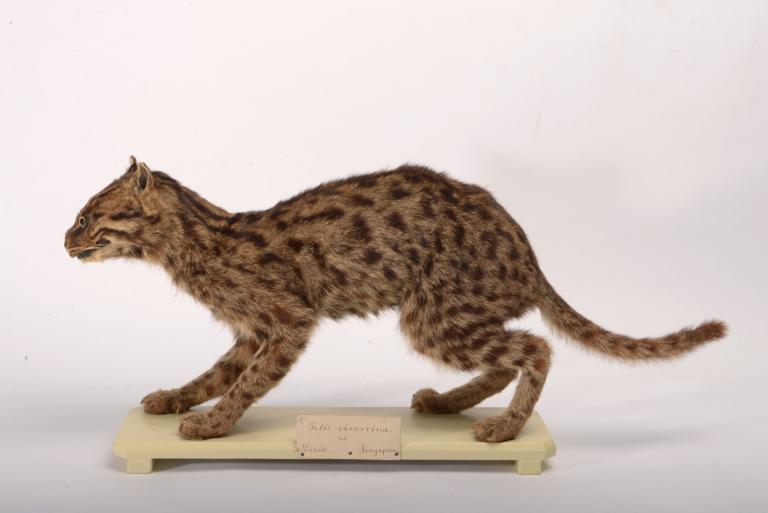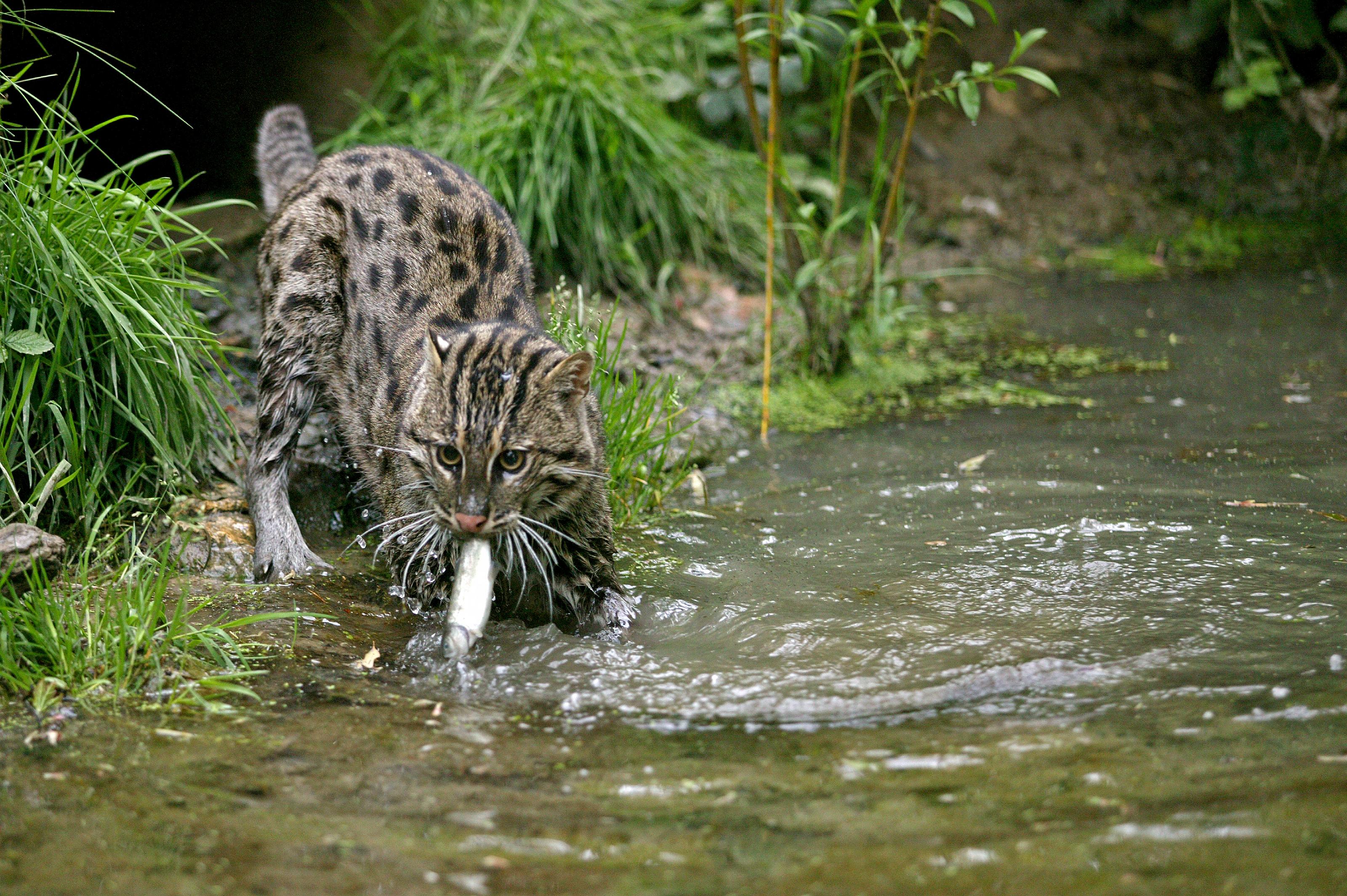
The skull and skin of a Fishing Cat has been in the collections of Naturalis for 200 years, but only recently did it receive attention. What researchers found can inform us about the history of Singapore – natural and cultural. And it shows just how fascinating objects from the collections can be.
Singapore,1819 A.D.
“Do you guys have anything from Singapore?” Sometimes research starts like this, reports Hannco Bakker. He and a colleague from Naturalis, Pepijn Kamminga, have worked together with researchers from Singapore on a specimen that lay forgotten for almost two centuries in the collections here at Naturalis. Specimen RMNH.MAM.59688 is the skull and mounted skin of a Fishing Cat (Prionailurus viverrinus) and as it turned out, it is quite special – because either it shouldn’t exist.
Problem number one is that fishing cats are never, and seem to have never been, Singaporean. How can that be then if there is one here at the museum? To answer this question, we have to go back to the 19th century and untangle the history of the cat. As far as the records go, it was in 1819 when two French naturalists, Pierre-Medard Diard and Alfred Duvaucel, were on expedition to Singapore to collect zoological specimens. Leading them was the English Sir Thomas Stamford Raffles (He, on a side note, would go on to become the founder of the modern city of Singapore). By the end of the expedition, the two Frenchmen and their English boss had gotten into an argument. Raffles seized what they had been collecting in Singapore, and left Diard and Duvaucel with almost nothing. And then Raffles’ ship sank - which leads to problem number two.
Natuurkundigecommissie
So why was the fishing cat not lost? We have two explanations. One would be that the expedition member Diard managed to hide the cat from Raffles. The other that taxonomic confusion stepped in for us: misidentification of the cat as a Leopard Cat (Prionailurus bengalensis) – a related yet distinct species – might have meant that Raffles showed little interest in keeping the fishing cat remains given that there were already other leopard cats in his collection.
This is where the records unfortunately become shakier. How and when did the cat make its way to Leiden? Likely, the specimen was part of a shipment that Diard made to Europe in 1830 – so in the years after the Singapore expedition and thus under his new employer: the Natuurkundige Commissie voor Nederlandsch-Indie (Committee for Natural History of the Netherlands Indies). For the next 190 years after it arrived at Naturalis, it got little attention until Wan Jusoh from the Lee Kong Chian Natural History Museum in Singapore reached out. She and her colleagues had been looking for Singaporean animals in collections all over in an effort to shed new light on the early natural history of Singapore. Today, biodiversity in Singapore is well documented, but we have only little data on the situation of the 19th century or before. The cat seemed like the perfect place to start.

Museumscooperating
Thus, the collaboration between the Singaporean and the Dutch museum started, culminating in a paper that was recently published in the journal Zoosystematics and Evolution. In it, the researchers sought out the answer to this central question: what does it mean that Naturalis possesses a fishing cat from Singapore when there are no fishing cats known from neither Singapore nor neighboring Malaysia? The researchers could only conclude inconclusively.
Either there was indeed a historic population of Prionailurus viverrinus in the region, or the cat came from somewhere else entirely and was merely bought – not caught – in Singapore. The researchers measured the skull of the Naturalis Fishing Cat and those do point towards a similarity to Javan Fishing Cats, but all theories remain speculations. “We simply have no way of ever knowing,” says Hannco Bakker who worked on the paper. There is great interest in biodiversity in Singapore these days, however, so if a Fishing Cat were to ever appear on the island again, it hopefully won’t slip the eyes of the watchful scientists.
The cat also raises some issues about museum collections more generally. As we have seen, Naturalis clearly owes rich collections in part to a long history of colonial expeditions. Many countries are now asking for objects to be repatriated. Singapore seems to be taking a slightly different approach, at least when it comes to zoological objects. “Preservation is much harder in their humid climate,” explains Hannco Bakker. “So they ask for digital repatriation instead. We send them scans and all the information on the specimen, while the physical objects stay here with us.” Loans are of course possible too, should researchers or museums ask for a specimen. Who knows if maybe one day specimen RMNH.MAM.59866 too will see Singapore once again.